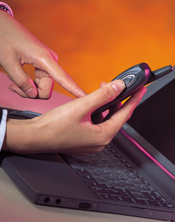The UK public has never been more addicted to smartphones, says Deloitte, in its sixth annual Mobile Consumer Survey, titled There’s no place like phone. It analyses the mobile usage habits of more than 4,000 UK consumers.
According to the audit firm’s research, a fifth (21 per cent) of all smartphone users in the UK are now using their fingerprints for a range of authentication-based applications, from unlocking their phones to approving transactions. Three-quarters (76pc) of those that have a fingerprint scanner, use it. It is by far the most popular biometric identifier used by smartphone owners, dwarfing the 2pc that use either voice or facial recognition.
Ed Marsden, lead telecoms partner at Deloitte, says: “The fingerprint has proven to be the most popular form of biometric security on smartphones. Not only is it fast, taking a fraction of the time required to type a password, but it is also unforgettable and inconspicuous for the user. The growth of fingerprint security is important. As fingerprint security becomes more common, consumers will find it easier – and safer – to pay for goods and services using their smartphones.”
Comment
Ollie Hayler, Business Development Lead in Biometrics, Fujitsu UK and Ireland said: “This Yahoo data breach, especially when paired with Deloitte’s recent forecast that people will have 200 online accounts by 2020, is a stark reminder that the traditional seven-letter password is no longer sufficient. We won’t be able to remember 200 separate passwords for our online activities, so a more convenient, yet secure, method of user authentication is needed.
“One solution is biometrics. Deloitte’s research found 31 per cent 18-24 year-olds already use fingerprint scanners on their phones and consumers are clearly becoming more comfortable with the idea of biometric authentication. But fingerprint scanning is only the tip of the iceberg of biometric opportunity. An example that stands out is palm vein which looks at characteristics of the vein itself as these are unique to every individual. Unlike fingerprints, veins are internal to the body, leaving no biometric residue thus making them extremely hard, if not impossible to steal or forge. It’s a technology that is already proven and is highly accurate; it is used for access in secure environments (such as hospitals, data centres and airports) and is touch free therefore more hygienic and less invasive, creating high user acceptance.
“The challenge now is for all stakeholders – from biometrics developers to IT vendors and companies themselves – to invest in and support wide-spread adoption of biometric technology in everyday lives. If we are each to have 200 online accounts in just four years’ time, biometric verification must become a standard identification process.”










